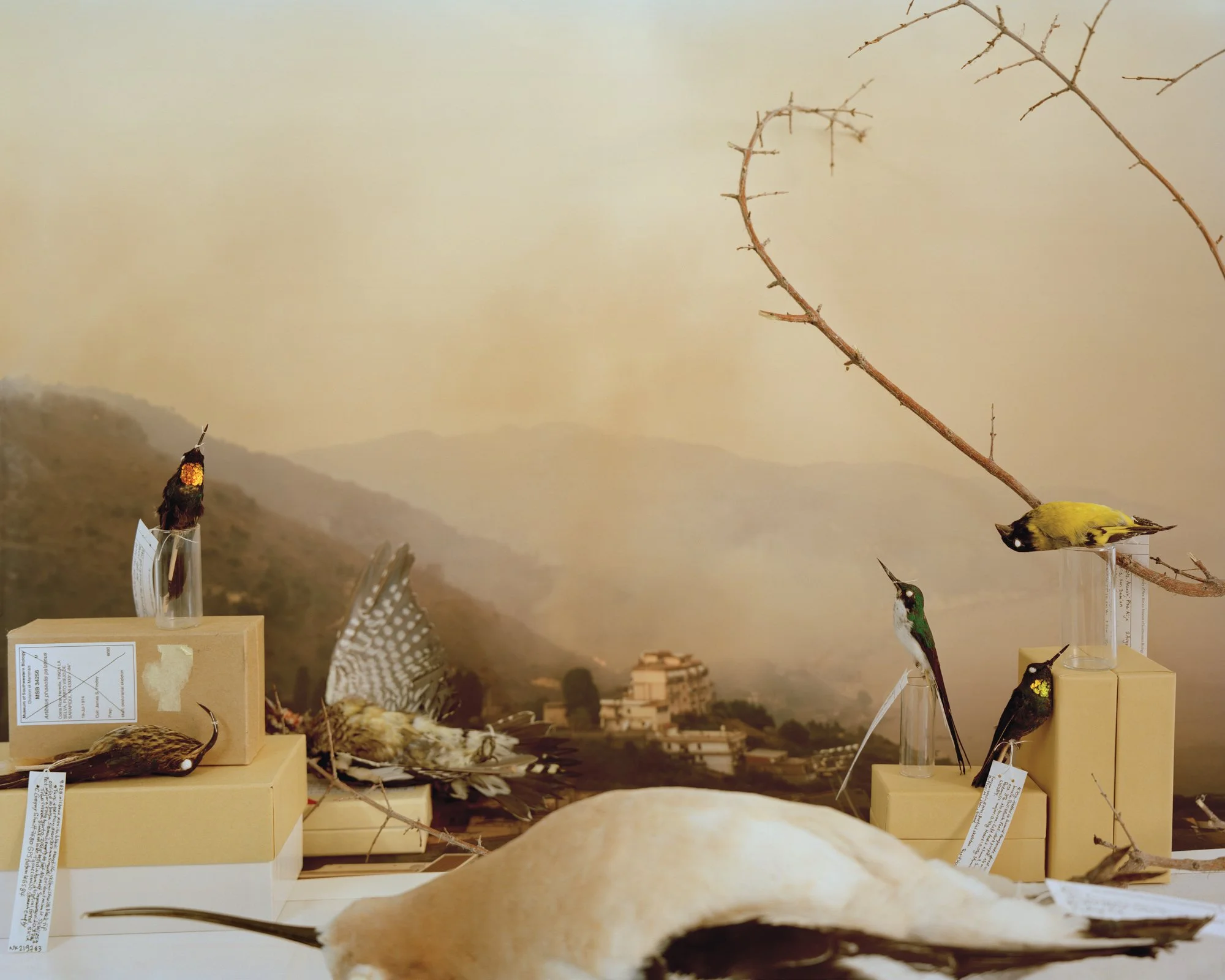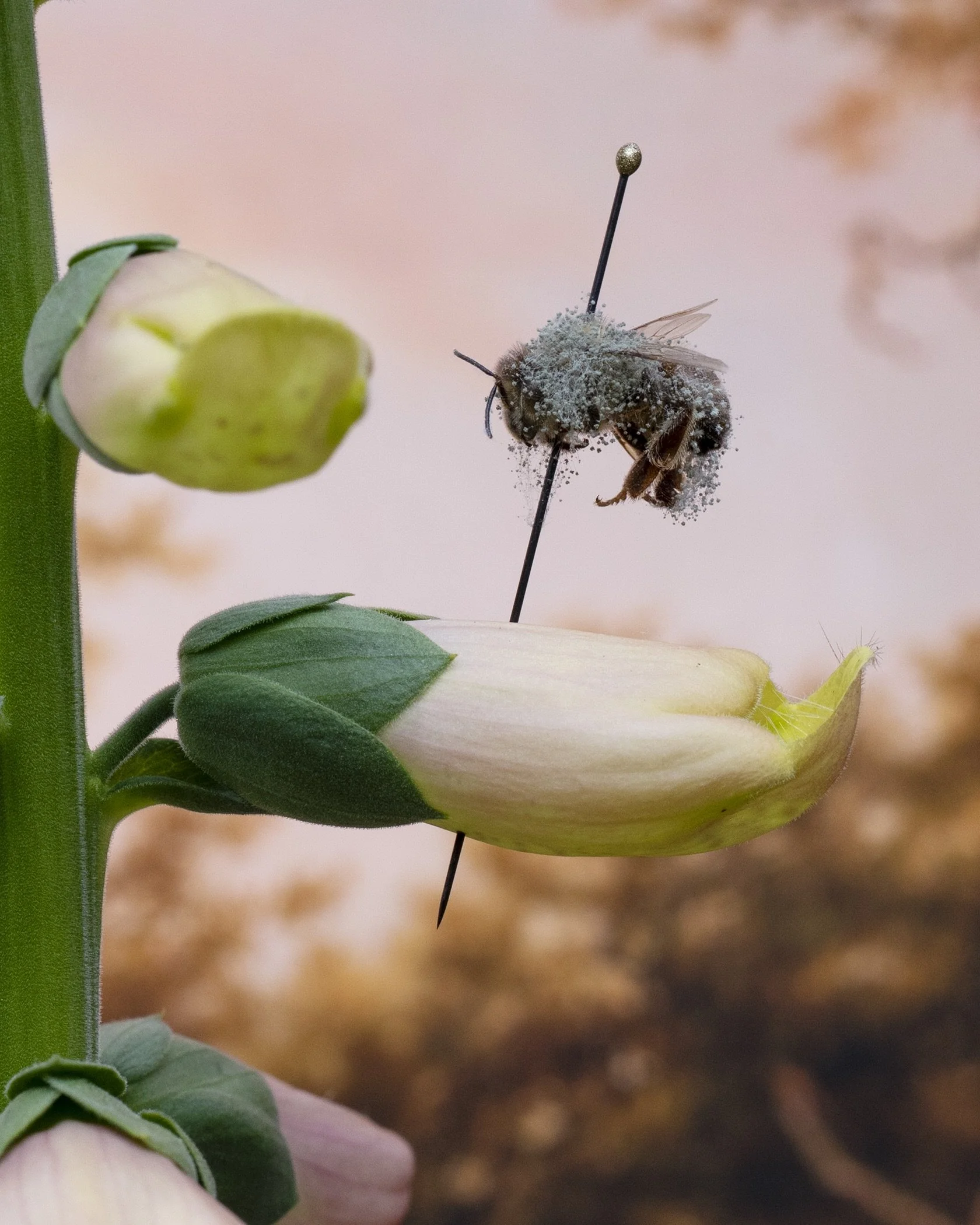Emma Ressel
Extant Erosions
Carol Crow Fellowship Recipient
November 20, 2025 - January 4, 2026
© Emma Ressel
Artist Panel Conversation
November 20, 2025 from 5:30 - 6:15 PM
Opening Reception
November 20, 2025 from 6:15 - 8:00 PM
© Emma Ressel
Meandering through archived materials stored in natural history collections including glass slides, taxidermy, preserved animals, and minerals, Extant Eorions poises the natural history museum as a prism through which we refract our human understandings of nature, land, and time. I examine the natural history institution as an important space for the general public to remember extinct and extant life, but also an insufficient and even perverse gesture to “save”.
This exhibition and accompanying artist book spans three modes of working. In the first, I construct still life photographs with taxidermy and animal specimens housed in museum collections. To make these images, I position specimens and printed backdrops before my camera to construct still life tableaus that I call fictional habitat dioramas. Some of the backdrops contain imagery of wildfire-smoke-filled skies or Hudson River School paintings that romanticize and fictionalize the landscape. These images demonstrate not only my fear about our environmental futures, but also a sense of sublime awe about the mystery of what’s to come.
Secondly, I scanned and reworked a collection of glass lantern slides that are housed in the geology collection at the University of New Mexico and were used by Prof. Stuart A. Northrop to teach geology and paleontology 100 years ago. They are lost to time and none of the current faculty know anything about them. I scanned the collection, re-fabricated them as larger, 8x10 glass slides, and displayed them on a custom 3x6 ft light table that I built, as well as in light boxes on the wall.
In my third mode of working, I talk back to the slide collection by adding images from my own personal photo archive to the 8x10 glass slides. This method engages with Dr. Nancy Marie Mithlo’s “talking back methodology” wherein Native artists are disrupting institutional archives by remixing the archive’s materials. The personal images I added to the slides include pictures of reptiles and amphibians made by my biologist dad and I over the last 30 years.
I exhibit this work in custom frames and install the framed prints on top of photo wallpapers. The function of the wallpapers is to engulf the audience in a particular environment and turn the gallery into a suggestion of a diorama, which implicates the audience as the diorama’s subjects.
In the book, the images are paired with text collected from many biologists and ecologists writing about extinction, the changing environment, and the future. Together, the disparate writers create a vaguely united, institutional voice discussing the qualities and phenomena of our deteriorating ecosystems. The scans of the glass slides are printed on narrow vellum sheets so that they retain their translucent quality within the book. The book was designed by Nicole Lavelle to evoke the form of mid-century field guides and technical manuals.
Together, the still life photographs, backlit slides, and wallpapers leap across time, asking us to consider how animal preservation, dioramas, and photo documentation shape our perception of the natural world. Through witnessing, capturing, cataloging, and preserving, we wrestle with describing nature—first to create meaning, and now to remember what we are rapidly losing. Both in terms of large format film photography and natural history collections, this work is about things slipping away and our gestures to hold on.
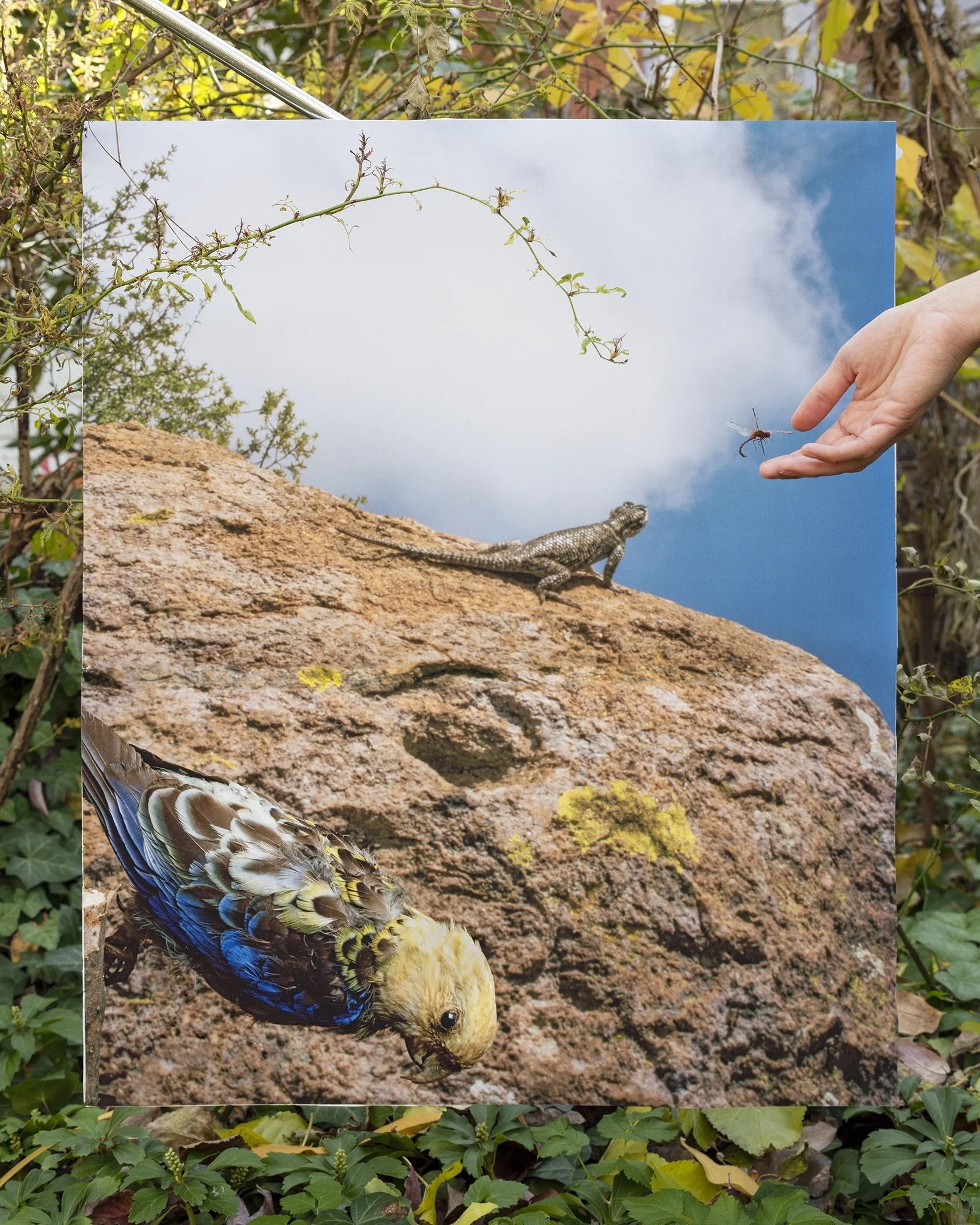
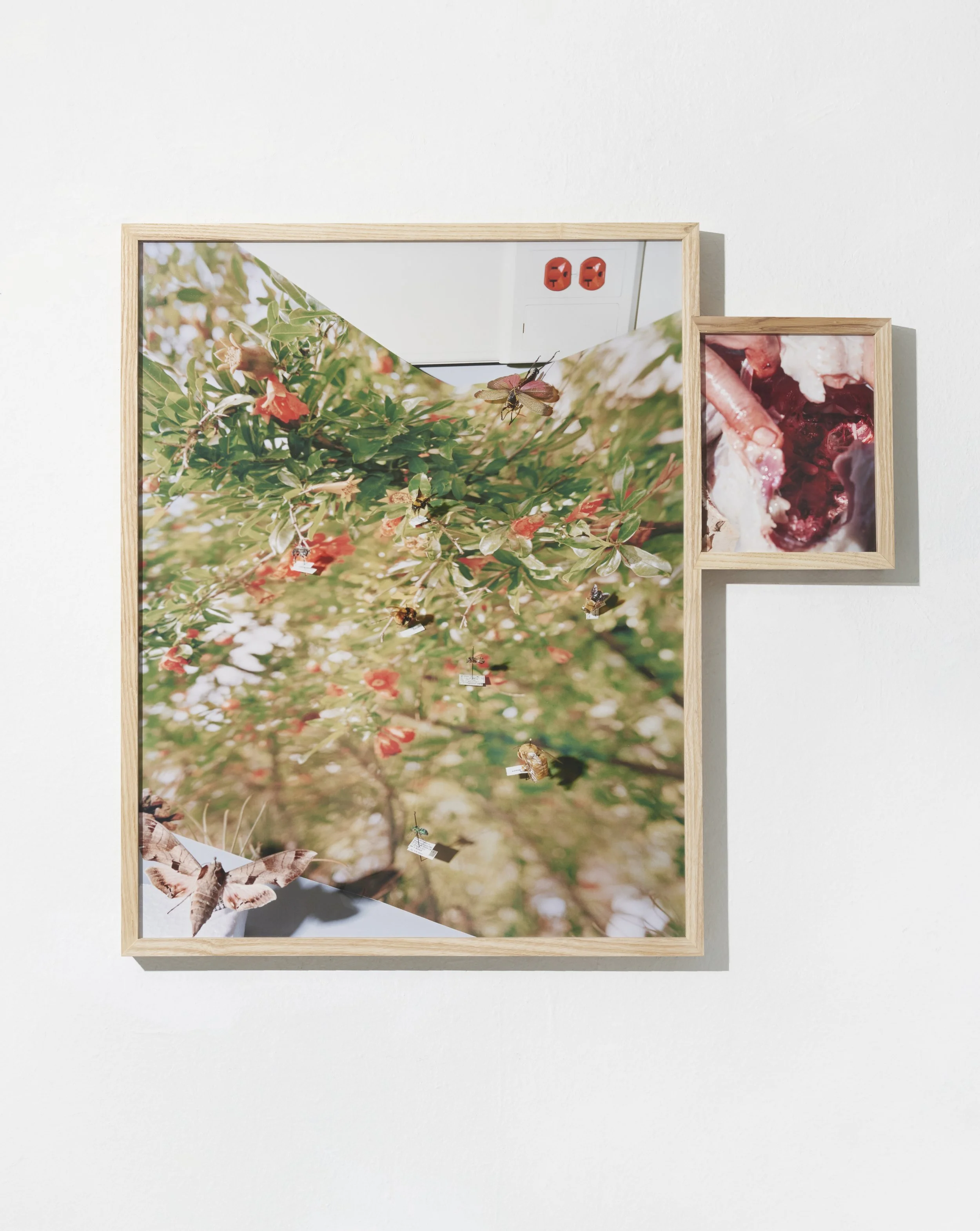
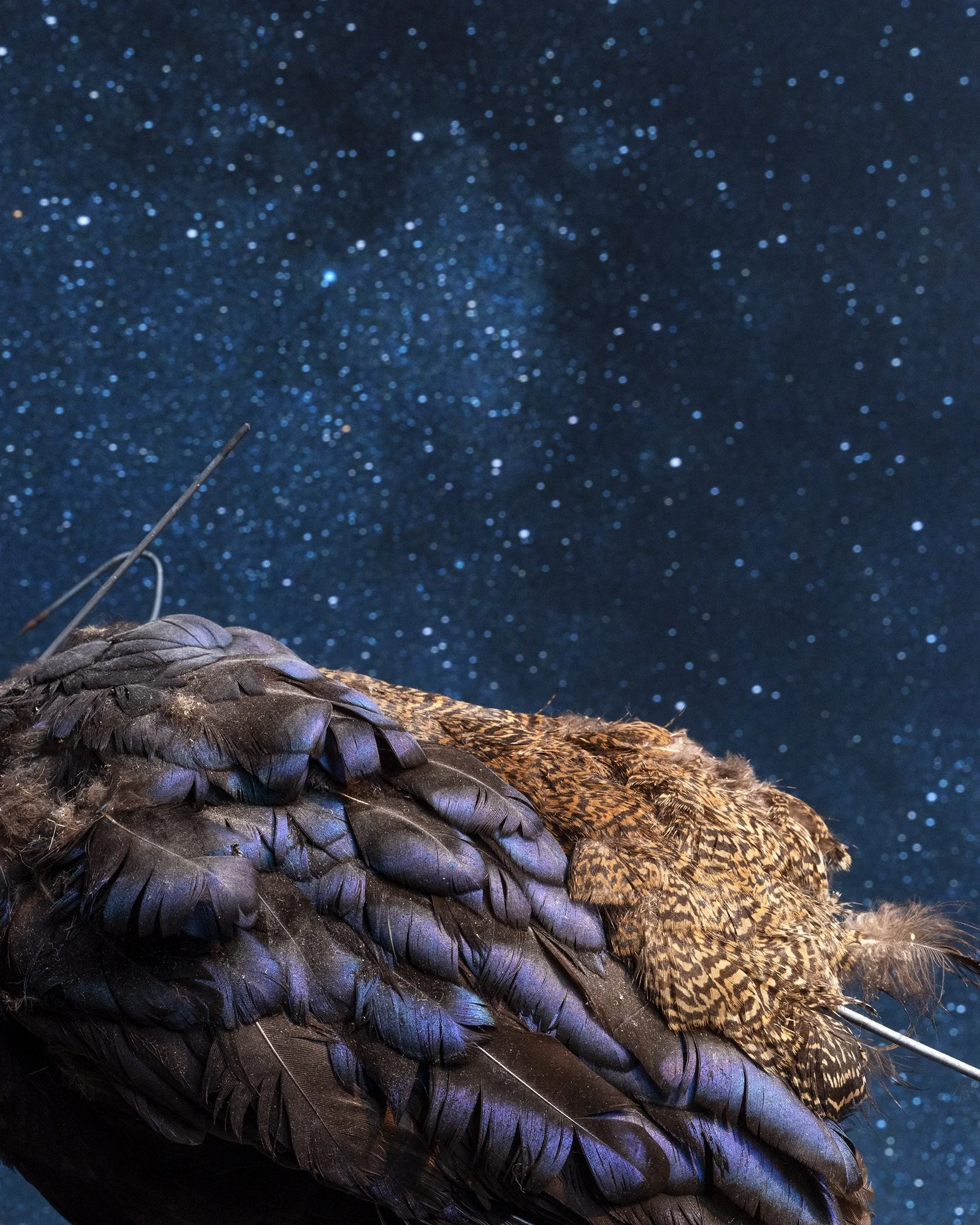
About the Artist: Emma Ressel
Emma Ressel (born Bar Harbor, ME, lives Albuquerque, NM) is an artist working with large format film photography, re-photography, and archives. Her current work researches natural history collections to examine how we describe nature to ourselves over vast timescales. A primary component of her practice is building fictional dioramas with preserved animals and printed backdrops to compose imagined ecological entanglements. Ressel earned her BA in Photography at Bard College in 2016 and was awarded the Bard Lugoland residency in Lugo, Italy. That project, titled Olives in the street, was published as her first photobook in 2017by Edizione del bradipo. Ressel earned her MFA at the University of New Mexico in 2025. She received the Film Photo Student Award to fund her thesis work, and was an Emerging Artist Fellow at Strata Gallery, where she had a solo show titled Glass Eyes Stare Back in 2024. Ressel’s thesis show, Extant Erosions, was exhibited at The New Mexico Museum of Natural History and Science, and she concurrently self-published an accompanying catalog under the same title. Ressel was on the shortlist for the 2025 Aperture Portfolio Prize and has work included in the exhibition Enough Already: Excess in Photography at The Philadelphia Museum of Art. Ressel is currently a Post-Doc Fellow at the Center for Regional Studies at the University of New Mexico, where she is conducting an independent research project into photographic slide archives at science and history museums across New Mexico. Ressel’s assignment work has been featured numerous publications including The New Yorker, New York Magazine, and Philadelphia Magazine. She is also a cofounder of the photobook collective Printer Jam with collaborators Kenton Bueche and Meggan Gould.
Questions?
For questions about this exhibition, please contact Exhibitions
Exhibitions and Programs Coordinator, exhibits@hcponline.org or 713-529-4755, ext 106.
Juror’s Statement: Gregory J. Harris
Ressel’s Extant Erosions simultaneously relishes in and challenges scientific methodologies and archival practices to examine how knowledge is created, collected, and disseminated. As a child, Ressel frequented a small natural history museum in Bar Harbor, Maine at the college where her father taught Biology, and she grew up looking at displays of taxidermy animals and collections of preserved specimens. This formative experience of being immersed in an archive keyed her into the ways, overt and subtle, that these repositories of knowledge order what is understood about the world and preserve what has passed from it; a practice that, much like photography, seeks to still time and hold it in place. Ressel’s work brings together photographs of augmented museum displays and historic lantern slides to scrutinize how scientific renderings of flora and fauna are, in her words, “romanticized and fictionalized,” and further to consider how such images dictate how we perceive the environment and our relationship to it. The slippages in Ressel’s images allude to the vast mysteries of the natural world and underscore the limitations of what we can truly comprehend about it.
Declaración de Jurado: Gregory J. Harris
La serie Erosiones existentes de Ressel simultáneamente se deleita y desafía las metodologías científicas y las prácticas archivísticas para examinar cómo se crea, recopila y difunde el conocimiento. De niña, Ressel frecuentaba un pequeño museo de historia natural en Bar Harbor, Maine donde su padre era instructor de biología y creció observando exhibiciones de animales disecados y colecciones de especímenes preservados. Esta experiencia formativa de estar inmersa en un archivo la condujo a comprender las formas, tanto evidentes como sutiles, en que estos repositorios de conocimiento ordenan lo que se entiende sobre el mundo y preservan lo que ha pasado de él; una práctica que, al igual que la fotografía, busca detener el tiempo y mantenerlo en su lugar. La obra de Ressel combina fotografías de exhibiciones museísticas aumentadas y diapositivas históricas para analizar cómo las representaciones científicas de la flora y la fauna son, en sus palabras, "romantizadas y ficcionalizadas", y para considerar, además, cómo dichas imágenes determinan nuestra percepción del entorno y nuestra relación con él. Los deslizamientos en las imágenes de Ressel aluden a los vastos misterios del mundo natural y subrayan las limitaciones de lo que realmente podemos comprender sobre él.

